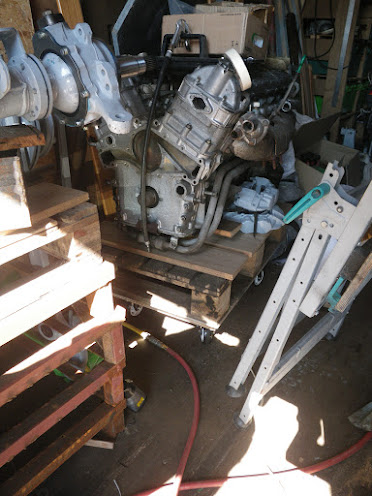Looking good love the Chaka Demus reference
I don't know about you but I always thought the real talent was with Pliers - he was lumbered with his mate...
(showing me age again)
BULKHEAD REPAIRS (partial) DAY TWO =>
There's a 141cm long bit of capping metal that goes in the "gutter" part of the bulkhead (on the inside where I guess most people put their Werther's Originals and perhaps a 3/8" spanner)
In the real world - when you're not a struggling DIYer - this job would be done on a nice big guillotine and a decent folding machine and be done in ten minutes. Here (where I am) it took a bit longer. Starting with a bit of 1mm thick Zincor =>
Cut cut cut cut cut - grind grind
Add in supports to stop it from drooping
Off into the hand shears - trimming off about 1 to 2mm from the coarse cut edge made by the grinding disc
Gorra put a bend along the length too =>
(Yes yes that bench needs a tidy)
Those vice mounted bending jaws really are a good buy.
They are not mega easy to use for these long lengths, however, as every time you crunch / bend each bit you need to move them along to the next position on your carefully drawn line.
Because each of the 28 positions (!) used to make the bend along the whole length - the positions of these jaws do not line up exactly - so the chances of a bit of waviness are high.
I'll try and draw an explanation of how the slightly unequal bending effect tends to pucker up the edges of the fold and induce distortion (need to think about that however). You can flatten parts a bit in the vice to get the bend to sit a bit better on a flat surface...
...but as you can see in both of these pictures there's a slight amount of distortion.
This waviness can be held down and clamped but tomorrow (may be in a few days) I'll show a trick to make the bend sit a bit flatter.
Next I need to cut out the holes for this gutter piece


